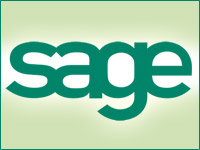
Pascal Houillon, the CEO of Sage North America, has been at the job for a bit over a year. He took over the reins at last year’s Sage Summit where he famously introduced a new branding exercise. Houillon’s idea was to make Sage a more prominent brand by de-emphasizing the individual product names, in many cases renaming them.
For a little background, remember that Sage grew by acquisition, one product and its development and marketing team at a time. By last year, Sage had become the Babel of the software industry, with a mix of products, mostly ERP, with different code bases and even file systems. Notice I said file systems and not databases, because some products were, and still are, running on flat files.
When a company rebrands, it can either be interpreted as a positive and forceful thing or it can be seen as something else. The idea last year was to replace a product name with a unique Sage brand name containing a number, like “Sage 50” for instance.
Since Sage has multiple overlapping products, tongues began to wag. Would ACT become known as “Sage CRM 101,” for example? We didn’t know. To many of us, the rebranding resembled chair rearrangement on the deck of the Titanic.
Teasing Out the Core
But fast-forward a year, and things have worked out. The rebranding was not an isolated exercise, and the company has asserted itself by identifying products that are core to its mission and those that are not. Non-core products, which tend to run standalone, are not destined for the dustbin, but they are being treated differently than the core products, which can be combined in an integrated solution.
Sage has three CRM-ish products: ACT, SalesLogix and SageCRM. ACT is CRM-ish because it is billed as a contact manager, not specifically SFA. SalesLogix is an older CRM product built for a Windows client-server world that has received many upgrades, and SageCRM is a SaaS product that can also be installed on-premise.
And the winner is? Well, there are no winners and no losers. But if you want Sage’s most modern (and I didn’t say feature-rich, though that is a debating point) CRM, you’ll want to go with SageCRM, because it is the one that is “core” and will receive the lion’s share of development dollars and integration support with ERP going forward.
The old Sage approach was to sprinkle development dollars across the whole portfolio, sometimes paying different brands to reinvent the wheel. That was necessary because each product had a constituency (read: reseller network) brought along in the acquisition. While some resellers carry multiple products, many just focus on one or two products on which they base their business, and this is key.
Taking Control
So all this preamble was needed to say that one of the biggest areas of re-thinking for Sage is not about any single product but about its go-to-market strategy and its resellers. Sage doesn’t sell direct, and over time, its resellers may have gained the upper hand in driving product development and enhancement for their pet products regardless of the overall good of Sage. It’s human nature. As Sage tries to rationalize its product set and brands, it is slimming down the number of code bases it has to support while trying to bring along its partners — a non-trivial task.Nonetheless, Sage has to deal with (and has begun the process over the last few years) a marketplace that demands social, mobile, analytic and real-time solutions. And it’s core/non-core strategy is focused on freeing up the resources needed to give the partners products with the ability to compete in the years ahead.
Does everyone like this strategy? What do you think? But more importantly, it’s working. During Houillon’s keynote, they showed a powerful video of customers using Sage products, from the iPad-driven customer meeting to the back-office do-we-have-it-in-stock query, to placing the order and billing. It looked very cool and was especially impressive because the technology was focused on the SMB market with the clear message that almost any business can afford to work this way, and this is how it will be done in the years ahead.
Time to Adapt
Partners that have become successful writing programs for reports or managing systems or just running cable might bristle, but there aren’t many of them. Most understand there are major changes happening in the industry, and the name of the game is “adapt”. Most worry about driving enough revenue from continuing operations because they are accustomed to the license and services model. I would only suggest that there is an important difference between revenue and profit, and everyone would be well-served to revisit that distinction.
There is a raft of new thinking about ideas like churn, monthly recurring revenue, deferred revenue and other things that are common to the subscription economy. The information is out there, and I have to believe that the more progressive partners are doing everything they can to learn about it. For now it was good to see a CEO like Houillon use words like “tough love” to give the troops the idea that the path has been set and they aren’t going back.























































